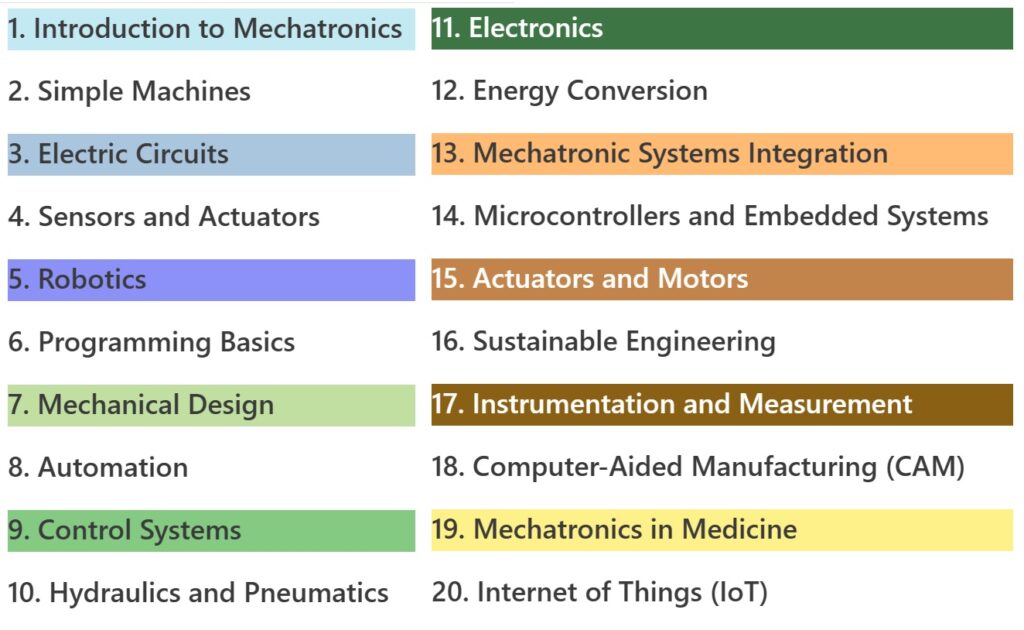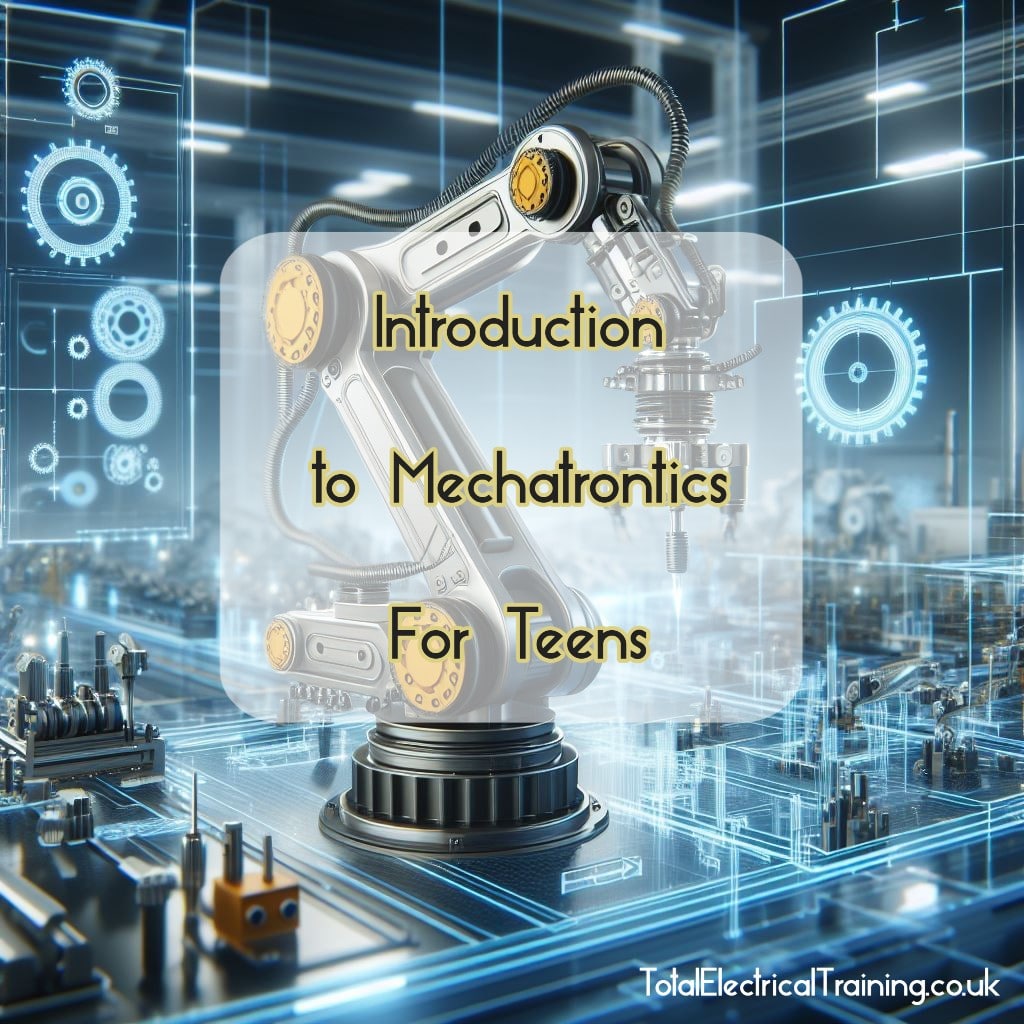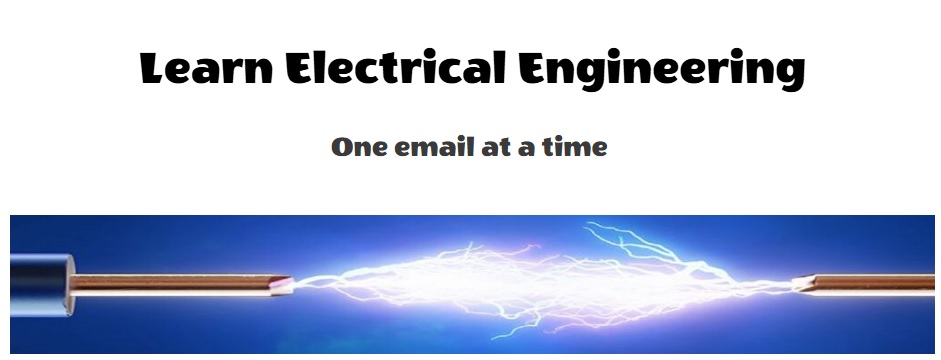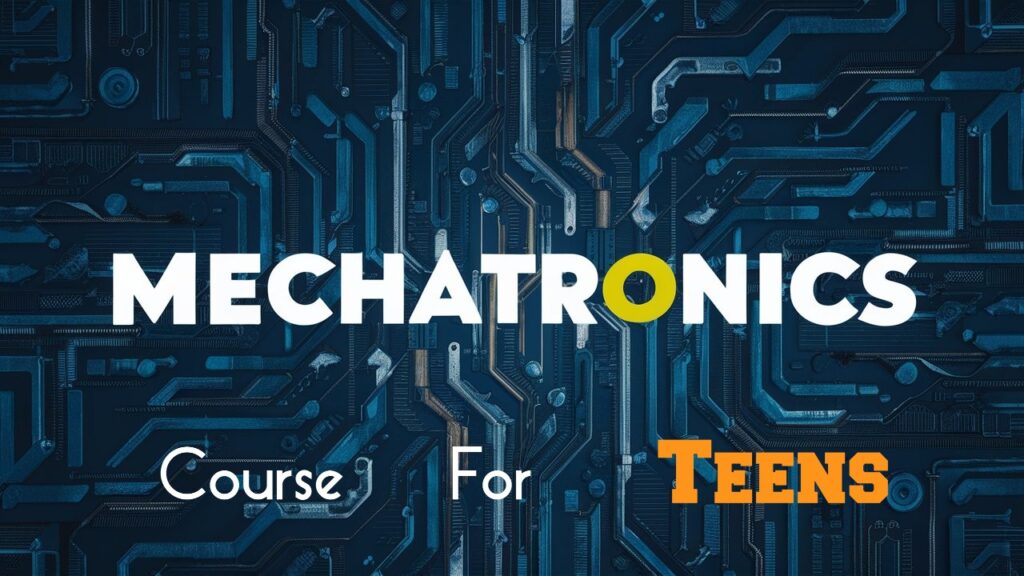Click the simple table below to be take to the FULL COURSE OVERVIEW

To complete this lesson you have READING, VIDEO, QUESTIONS, and A HANDS ON PROJECT
Mechatronics, a fascinating field at the intersection of mechanics, electronics, and computing, represents the seamless fusion of diverse engineering disciplines. Let’s delve into this multidisciplinary domain that shapes our modern automated world.
What is Mechatronics?
Mechatronics—also known as mechatronics engineering—is an interdisciplinary branch of engineering that harmoniously integrates several key areas:
- Mechanical Engineering: The foundation lies in understanding the principles of mechanics, materials, and physical systems. Mechanical engineers design and analyze components, structures, and machines.
- Electrical Engineering: Electrical engineers delve into circuits, power systems, and electronics. They create electrical designs, control systems, and sensors.
- Electronic Engineering: This field focuses on electronic devices, communication systems, and digital circuits. Electronic engineers contribute to the development of sensors, actuators, and communication interfaces.
- Software Engineering: Mechatronics wouldn’t be complete without software. Software engineers write code for embedded systems, control algorithms, and user interfaces.
- Robotics: Robots are the embodiment of mechatronics. Designing, programming, and controlling robots fall within this realm.
- Computer Science: Algorithms, data structures, and real-time processing are essential for mechatronic systems.
- Telecommunications: Communication networks enable data exchange between components, devices, and systems.
- Systems Engineering: Mechatronics thrives on a holistic approach. Systems engineers manage complexity, ensuring all components work seamlessly together.
- Product Engineering: The end goal is to create intelligent, efficient products. Mechatronics engineers design everything from smart appliances to autonomous vehicles.

Historical Roots
The term “mechatronics” emerged in the late 1960s, but its true significance blossomed in subsequent decades. Originally, it was a blend of “mecha” (mechanics) and “tronics” (electronics). However, as technology evolved, so did the definition. Today, mechatronics encompasses a broader spectrum, including robotics, control theory, and telecommunications.
Applications and Impact
Mechatronics infiltrates an abundance of industries:
- Manufacturing: Automated assembly lines, CNC machines, and robotic arms owe their efficiency to mechatronics.
- Automotive: From anti-lock braking systems to self-driving cars, mechatronics enhances safety and performance.
- Healthcare: Medical devices, prosthetics, and surgical robots rely on mechatronics.
- Consumer Electronics: Smartphones, wearables, and home automation systems all benefit from mechatronic design.
- Aerospace: Avionics, drones, and satellite systems incorporate mechatronics principles.
- Energy: Renewable energy systems, such as wind turbines and solar panels, leverage mechatronics for optimal operation.
The Mechatronics Engineer
A mechatronics engineer wears many hats: part mechanic, part electrician, part programmer. They bridge the gap between hardware and software, ensuring seamless integration. Their toolkit includes sensors, microcontrollers, actuators, and algorithms. Whether designing a robotic arm or optimizing an HVAC system, mechatronics engineers thrive on complexity.
In summary, mechatronics is more than a buzzword—it’s the art of harmonizing diverse engineering realms to create intelligent, interconnected systems that shape our modern world.
Hands on Project for this Lesson
Create a simple mechanical hand. This can be done out of cardboard or thick paper or whatever you have on hand. Your free and flexible to do a robot arm or a human mechanical hand! There are an abundance of videos or articles across the internet to choose your project from.

Questions
- What are the main components of a mechatronic system?
- How does a mechanical hand mimic the function of a human hand?
- What is the role of sensors in mechatronics?
- Why is it important to understand both mechanical and electronic aspects in mechatronics?
- Research Question: Research the history of mechatronics and find out who coined the term.
Buy me a Coffee
I would be honoured if you’d buy me a digital coffee to express your thanks for this Mechatronics Course I’ve put together to help eager minds excel in their knowledge, learning and success.
Your kind donation makes it possible for me to continue creating amazing content and fulfil my dream of keeping the majority of what I make FREE and Ad FREE!!!
Thank you from the bottom of my heart, and abundant blessings to you!

Join students and professionals
from across the world increasing their knowledge of Electrical Engineering.
One email at a time
We never send spam or give your information to anyone, Privacy Policy here.



